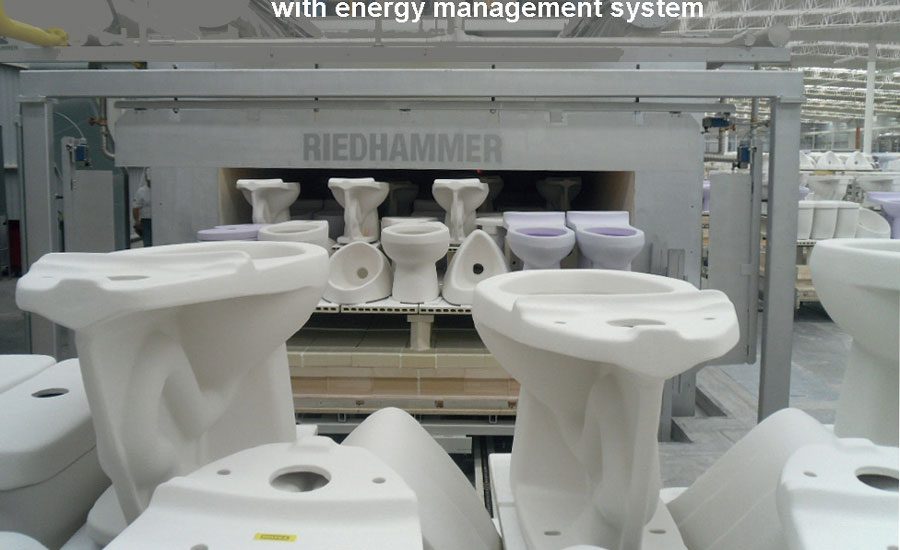From 3D mapping of the firing process to implementation of the EMS (energy management system) “version 4.0”, from the innovative range of REKO burners to the co-generation frontier. The result: efficiency improvements from 90 to 126%, with enormous energy savings in terms of costs and emissions.
According to estimates issued by the IEA (International Energy Agency) World Energy Outlook, the global economy will grow by 150% between now and 2040. This will involve a surge in energy demand, which has already grown by 70% over the last 30 years and is expected grow a further 45% between now and 2030. These figures are obviously of keen interest to the sanitaryware industry, especially as regards the firing process, where major companies are leading the way in developing more efficient, less energy-hungry processes that ultimately have less impact on both the environment and production costs.
This field constitutes the core business of Sacmi–Riedhammer which, thanks to decades of research and unparalleled expertise in the sanitaryware firing field, has developed both a technology and a management system to ensure an efficient firing process. The Riedhammer system has four ‘pillars’: the first, 3D mapping of the firing process (EEE, energy-efficient engineering), which allows detailed 3D simulation of the crucial steps of the production process and the creation – during the development phase – of cutting-edge design solutions for each individual detail.
The heart of the solution is the energy management system (EMS), version 4.0 for tunnel kilns. This boosts process energy efficiency by 90% (from 1,260 to just 660 kcal per kg of fired product); on roller hearth kilns that figure can be extended to 126% (just 543 kcal). On an annual basis, then, such benefits give the manufacturer energy savings of hundreds of thousands of Euros and cut consumption-related CO2 emissions by several million kgs. Available also in the 700–Cyber version, the EMS focuses on configuration of the burners; the gas-air mix is electronically controlled and excess heat can be harnessed for use in other stages of the manufacturing process.
Thanks to the development of the REKO burner range, Riedhammer has also considerably reduced the consumption gap between the shuttle and continuous firing processes; on one hand, this has been achieved by optimal use of heat transmission inside a special developed combustion chamber and, on the other, by developing ever-more efficient insulation to minimise heat loss in the shuttle kiln. The fourth and final pillar of the Sacmi-Riedhammer method consists of implementing effective heat recovery systems in the final firing stages when both volumes and temperatures are optimal for being channelled to other manufacturing departments such as drying and spray-drying etc.
The future? Conversion of all excess heat energy into electrical energy with the aid of cogeneration systems. A scenario that the Sacmi Group company Riedhammer is developing every day together with its capacity to engineer the firing process alongside the customer, thus meeting his specific manufacturing needs and achieving optimal system configuration.
